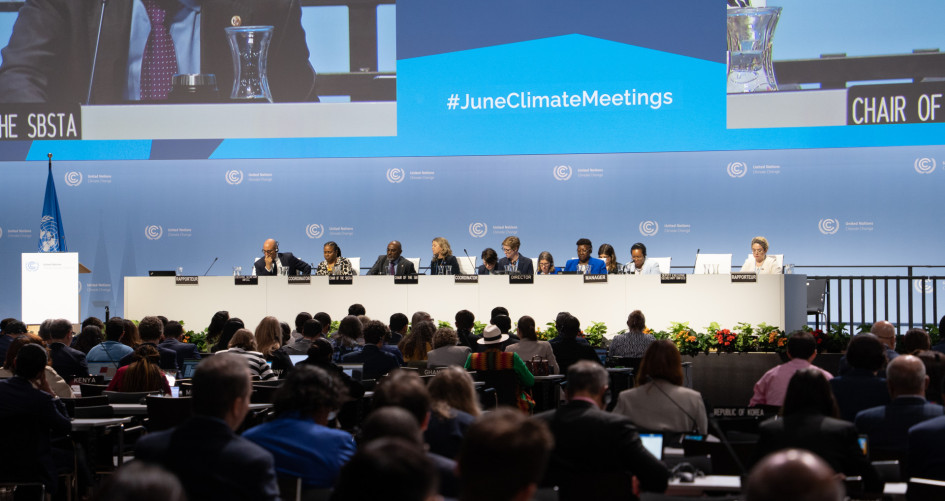UN boosts climate budget, but carbon credit limitations raise industry concerns – Reccessary

Bonn Climate Conference (SB62) Report: Advancing Sustainable Development Goals through Enhanced Climate Action
Introduction
The Bonn Climate Conference (SB62), held as a pivotal preparatory meeting for the United Nations Climate Change Conference (COP30) scheduled for November, concluded on June 26. The conference brought together nearly 200 countries to discuss and advance global climate initiatives aligned with the Sustainable Development Goals (SDGs), particularly SDG 13 (Climate Action).
Increase in UN Climate Budget to Support SDG Implementation
One of the significant outcomes of SB62 was the agreement to increase the United Nations Framework Convention on Climate Change (UNFCCC) core budget by approximately 10% for the 2026–2027 period, raising it to €81.5 million (about US$95.3 million). This budget enhancement is critical for strengthening climate action frameworks and supporting the achievement of SDG 13.
Key Budget Contributors
- United States: Continues as the largest contributor, responsible for 22% of the funding. Bloomberg Philanthropies has committed to covering the U.S. share to ensure uninterrupted UNFCCC operations.
- China: Will increase its contribution from 15% to 20%, reflecting its economic growth and commitment to global climate efforts.
SDG Linkages
- SDG 13 (Climate Action): Enhanced funding supports climate change mitigation and adaptation initiatives.
- SDG 17 (Partnerships for the Goals): International cooperation and financial commitments exemplify global partnerships.
Scrutiny of the UN Carbon Market Mechanism and Its Implications for Sustainable Development
The conference addressed Article 6.4 of the Paris Agreement, which establishes a UN-supervised global carbon market mechanism. This mechanism is designed to facilitate transparent and high-quality carbon credit trading to support national climate goals.
Key Decisions on Article 6.4
- Carbon credits generated under Article 6.4, known as mitigation contribution units (A6.4ERs), are restricted to fulfilling countries’ Nationally Determined Contributions (NDCs) and cannot be used for corporate emission offsetting.
- This restriction encourages companies to focus on direct emission reductions and supply chain decarbonization, aligning with SDG 12 (Responsible Consumption and Production) and SDG 9 (Industry, Innovation, and Infrastructure).
- Article 6.4 contrasts with Article 6.2, which allows bilateral or multilateral transfer of mitigation outcomes.
Challenges and Calls for Ambition
Despite progress, concerns remain regarding the quality and effectiveness of carbon credits. Nonprofit organizations such as Carbon Market Watch, the World Resources Institute (WRI), and the Center for International Environmental Law (CIEL) have urged nations to adopt more ambitious measures at COP30 to ensure climate goals remain attainable, reinforcing commitments to SDG 13.
Conclusion
The Bonn Climate Conference (SB62) successfully advanced key financial and regulatory frameworks essential for global climate action. The increased UNFCCC budget and clarified carbon market mechanisms contribute directly to the achievement of multiple Sustainable Development Goals, especially SDG 13. However, continued vigilance and enhanced ambition are necessary to address outstanding challenges and accelerate progress towards a sustainable and resilient future.
References
- Reuters
- Carbon Market Watch
- Center for International Environmental Law (CIEL)
- World Resources Institute (WRI)
1. Sustainable Development Goals (SDGs) Addressed or Connected
- SDG 13: Climate Action
- The article focuses on international climate negotiations, budget increases for climate action, and carbon market mechanisms, all directly related to combating climate change.
- SDG 17: Partnerships for the Goals
- The collaboration among nearly 200 countries, increased funding contributions from the U.S. and China, and involvement of philanthropic organizations like Bloomberg Philanthropies highlight global partnerships to support climate initiatives.
2. Specific Targets Under Those SDGs Identified
- SDG 13: Climate Action
- Target 13.2: Integrate climate change measures into national policies, strategies, and planning. The article mentions Nationally Determined Contributions (NDCs) and the use of carbon credits to fulfill these commitments.
- Target 13.a: Implement the commitment undertaken by developed-country parties to the UNFCCC to mobilize jointly $100 billion annually by 2020 to address the needs of developing countries. The increase in the UNFCCC budget by 10% reflects ongoing financial commitments.
- SDG 17: Partnerships for the Goals
- Target 17.3: Mobilize additional financial resources for developing countries from multiple sources. The article discusses increased contributions from countries and philanthropic sources.
- Target 17.17: Encourage and promote effective public, public-private, and civil society partnerships. The collaboration among governments and non-governmental organizations is evident.
3. Indicators Mentioned or Implied to Measure Progress
- For SDG 13 Targets:
- Indicator 13.2.2: Total greenhouse gas emissions per year. The article’s discussion on carbon credits and mitigation contribution units (A6.4ERs) relates to measuring emissions reductions.
- Indicator 13.a.1: Amount of financial support to developing countries for climate change mitigation and adaptation. The increase in the UNFCCC budget and contributions from countries and philanthropies serve as measurable financial inputs.
- For SDG 17 Targets:
- Indicator 17.3.1: Foreign direct investments, official development assistance, and South-South cooperation as a proportion of total domestic budget. The article’s mention of budget increases and funding shares from various countries aligns with this indicator.
- Indicator 17.17.1: Amount of United States dollars committed to public-private partnerships. The involvement of Bloomberg Philanthropies and other entities implies tracking such partnerships.
4. Table of SDGs, Targets, and Indicators
| SDGs | Targets | Indicators |
|---|---|---|
| SDG 13: Climate Action |
|
|
| SDG 17: Partnerships for the Goals |
|
|
Source: reccessary.com








